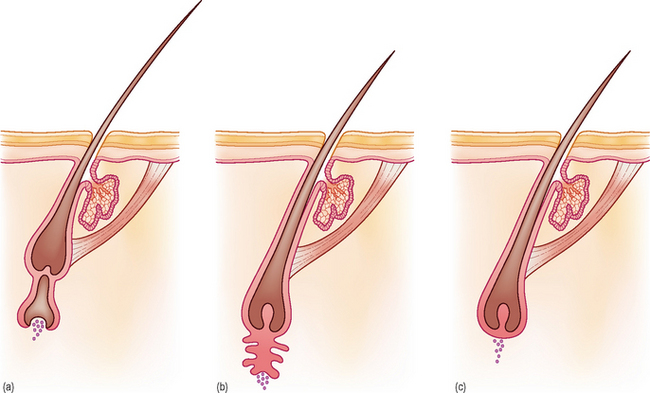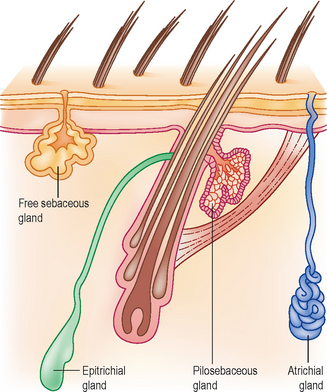20 Introduction to alopecia
HAIR FOLLICLE ANATOMY AND PHYSIOLOGY
The hair follicle unit consists of the hair follicle itself, the sebaceous gland, sweat gland and an arrector pili muscle (Fig. 20.1). Anatomically the hair follicle is divided into three segments: the infundibulum, the isthmus and the hair bulb (see Chapter 13, Fig. 13.5). The hair follicle consists of inner and outer tubes, the inner and outer root sheaths. The inner root sheath and the hair shaft itself arise from and are produced by a swelling at the base of the hair follicle called the hair bulb.
The hair growth cycle
The active growth phase is termed anagen, and is followed by a transitional period, catagen, and a resting phase, telogen (Fig. 20.2a–c). The duration of each phase varies according to age, body region, breed and sex, as well as intrinsic, extrinsic and external factors. Breed has a dramatic effect on the hair cycle, with some dogs having an anagen- or a telogen-dominated hair cycle. Breeds such as poodles and Bichon Frise have anagen-dominated cycles. Essentially, this is where hair follicles are in anagen for long periods of time. These are breeds that require hair cuts. Plush-coated breeds such as the chow-chow, Malamutes and Pomeranians have telogen-dominated hair cycles. This is where the hair follicle spends long periods of time in telogen with a retained telogen hair shaft. Presumably, evolutionarily speaking this is advantageous in a cold climate when hair growth requires protein and energy.

Figure 20.2 (a) Anagen hair – new hair being formed below a telogen.
(b) Catagen phase – transitional period between the anagen and telogen hair.




